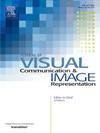Person re-identification transformer with patch attention and pruning
IF 2.6
4区 计算机科学
Q2 COMPUTER SCIENCE, INFORMATION SYSTEMS
Journal of Visual Communication and Image Representation
Pub Date : 2024-11-26
DOI:10.1016/j.jvcir.2024.104348
引用次数: 0
Abstract
Person re-identification (Re-ID), which is widely used in surveillance and tracking systems, aims to search individuals as they move between different camera views by maintaining identity across various camera views. In the realm of person re-identification (Re-ID), recent advancements have introduced convolutional neural networks (CNNs) and vision transformers (ViTs) as promising solutions. While CNN-based methods excel in local feature extraction, ViTs have emerged as effective alternatives to CNN-based person Re-ID, offering the ability to capture long-range dependencies through multi-head self-attention without relying on convolution and downsampling. However, it still faces challenges such as changes in illumination, viewpoint, pose, low resolutions, and partial occlusions. To address the limitations of widely used person Re-ID datasets and improve the generalization, we present a novel person Re-ID method that enhances global and local information interactions using self-attention modules within a ViT network. It leverages dynamic pruning to extract and prioritize essential image patches effectively. The designed patch selection and pruning for person Re-ID model resulted in a robust feature extractor even in scenarios with partial occlusion, background clutter, and illumination variations. Empirical validation demonstrates its superior performance compared to previous approaches and its adaptability across various domains.
人员重新识别变压器贴片注意和修剪
人员再识别(Re-ID)技术广泛应用于监控和跟踪系统,其目的是通过在不同的摄像机视图中保持身份来搜索在不同摄像机视图之间移动的个人。在人的再识别(Re-ID)领域,最近的进展是引入卷积神经网络(cnn)和视觉变压器(ViTs)作为有前途的解决方案。虽然基于cnn的方法在局部特征提取方面表现出色,但vit已经成为基于cnn的人的Re-ID的有效替代方案,它提供了通过多头自关注捕获远程依赖关系的能力,而不依赖于卷积和下采样。然而,它仍然面临着诸如光照、视点、姿态、低分辨率和部分遮挡的变化等挑战。为了解决广泛使用的人员Re-ID数据集的局限性并提高泛化能力,我们提出了一种新的人员Re-ID方法,该方法利用ViT网络中的自关注模块增强了全局和局部信息交互。它利用动态修剪有效地提取和优先考虑必要的图像补丁。所设计的人体Re-ID模型的斑块选择和剪枝即使在部分遮挡、背景杂波和光照变化的情况下也能获得鲁棒的特征提取器。实证验证表明,该方法具有较好的性能和跨领域的适应性。
本文章由计算机程序翻译,如有差异,请以英文原文为准。
求助全文
约1分钟内获得全文
求助全文
来源期刊

Journal of Visual Communication and Image Representation
工程技术-计算机:软件工程
CiteScore
5.40
自引率
11.50%
发文量
188
审稿时长
9.9 months
期刊介绍:
The Journal of Visual Communication and Image Representation publishes papers on state-of-the-art visual communication and image representation, with emphasis on novel technologies and theoretical work in this multidisciplinary area of pure and applied research. The field of visual communication and image representation is considered in its broadest sense and covers both digital and analog aspects as well as processing and communication in biological visual systems.
 求助内容:
求助内容: 应助结果提醒方式:
应助结果提醒方式:


